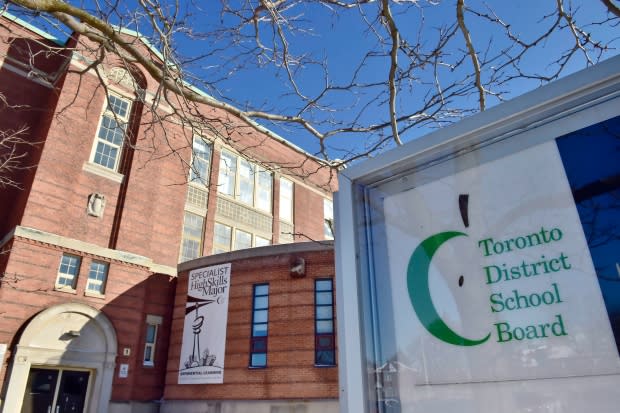Ontario's class size increase could cut more than 1,000 teaching jobs, TDSB estimates
The Ford government's decision to increase average class sizes will mean losing more than 1,000 teaching jobs, according to a memo sent to Toronto District School Board (TDSB) trustees.
While still a preliminary estimate, the province's largest school board says the significant changes announced last week could mean 216 fewer teachers in Grades 4 to 8, and 800 fewer teachers in high schools.
The government announced the changes to Ontario's education system on Friday, including increased intermediate and high school class sizes, new elementary math and sex-ed curricula and a province-wide ban on cellphones in the classroom during instructional time.
As part of the government's new education plan, the average class size requirement for secondary Grades 9 to 12 will be adjusted to 28, up from the current average of 22.
Meanwhile, the average class size for intermediate Grades 4 to 8 will increase to 24.5, up slightly from 23.84.
Job losses expected to come from retirements, resignations
However, the job losses will not come from immediate layoffs, the memo said. That's because the government is providing funding for a four-year transition period.
"Class size reductions can only be a result of retirements, resignations or other voluntary leaves during this period," the memo said.
"There will be no involuntary job losses," said Education Minister Lisa Thompson on Monday.
Thompson said they will be consulting with school boards in the coming weeks to identify their number of retirements, resignations and deployments.

During the transition, the government said it will have an extra $1.6 billion for school boards over the next three years for "attrition protection to support maintaining teaching positions, where needed, so that reductions can be managed through teacher attrition and voluntary leaves."
"We're going to work with them to make sure those teachers don't lose their jobs if the numbers don't mesh," Thompson said.
Across the province, Harvey Bischof, President of the Ontario Secondary School Teachers' Federation, said Friday the government's plan will affect about 5,500, or about 20 per cent, of high school teachers in publicly-funded systems.
Those jobs include 3,600 OSSTF positions, he said, which "cannot possibly be absorbed without a significant impact on student learning and success."
The Ontario English Catholic Teachers Association said Friday that the change will "result in the loss of approximately 5,000 teaching positions in Catholic schools."
Thompson said they are trying to align Ontario's classroom sizes with other jurisdictions across Canada.
'Dramatic' reduction
The opposition attacked the proposed changes and "dramatic" reduction in teachers at Queen's Park on Monday.
"The minister said no job losses," said NDP education critic Marit Stiles.
Education Minister Lisa Thompson responded there would be no involuntary job losses, and accused Stiles of pulling numbers "out of the cloud."

Stiles, citing the TDSB memo, said it's clear what will happen. "The minister wants to argue that when somebody retires and [that job is not filled], that's not a job lost," said Stiles.
"Tell that to the teachers who won't be getting a job."
Thompson accused the NDP of "fear mongering."
The TDSB memo also noted funding cuts for secondary programming will impact another 82 teaching jobs.
The board estimates the changes, which include other funding cuts, would save the province between $20 and $25 million.
The government changes come after a months-long consultation process that, according to PC officials, obtained feedback from 72,000 different stakeholders, including educators, parents and unions.
The Ministry of Education is still holding consultations about the changes until May 31.

